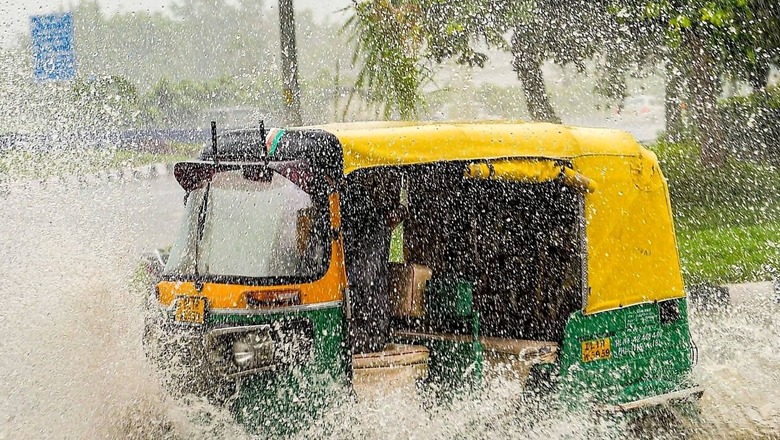
views
July was meteorologically peculiar for Delhi as it witnessed five heatwave days, the maximum since 2012, an unusual two-week-delayed monsoon, and rainfall that broke records of nearly two decades. The month started with the national capital recording three heatwave days on the trot — July 1, July 2 and July 3.
The mean maximum temperature for July was 36.5 degrees Celsius against the long-period average of 35.5 degrees Celsius. The weather office had a hard time accurately predicting when the monsoon would reach the capital and came under sharp criticism when the wind system repetitively gave Delhi a miss despite favourable conditions.
Despite the monsoon reaching Delhi only on July 13, making it the most-delayed in 19 years, the capital recorded 16 rainy days in the month, the maximum in the last four years. Three rainy days were recorded before the monsoon reached the city, according to India Meteorological Department data. The Safdarjung Observatory, considered the official marker for the city, received 507.1 mm rainfall this July, which was nearly 141 per cent above the long-period average of 210.6 mm. It was also the maximum rainfall in the month since July 2003, and the second highest ever.
In 2013, Delhi had received 340.5mm rainfall. The all-time record is 632.2mm precipitation in July in 2003, according to the IMD. Overall, Delhi has gauged 570.1mm rainfall so far since June 1, when the monsoon season starts, against the normal of 281.9mm — which is an excess of 102 per cent.
Of the 16 rainy days in July, Delhi received heavy rainfall on three occasions — July 18-19 (69.6mm), July 26-27 (100mm) and July 29-30 (72mm). Most of the 100mm rainfall recorded on July 26-27 occurred in just three hours. It was also the maximum rainfall in 24 hours in the month of July in eight years. In 2013, Delhi had received 123.4mm rainfall on July 21.
Besides, heavy rainfall events were also observed at the Ridge observatory on July 15 (107.4mm) and the Palam observatory on July 20 (67.6mm) and July 28 (68.7mm). Rainfall recorded below 15 mm is considered light, between 15 and 64.5 mm is moderate, between 64.5 mm and 115.5 mm is heavy, between 115.6 and 204.4 is very heavy. Anything above 204.4 mm is considered extremely heavy rainfall.
The IMD measures monsoon performance in five categories — large excess (rainfall is above 60 per cent of normal), excess (20 per cent to 59 per cent more than average), normal (minus 19 to 19 per cent of normal), deficit (minus 20 per cent to minus 59 per cent) and large deficit (60 per cent below normal). Mahesh Palawat, vice president (meteorology) at Skymet Weather, a private forecasting agency, said the extreme weather events in July this year were directly linked to climate change.
Such contrasting weather events in the same month are very unusual. It was extremely hot as there was no rain for the first half of the month, he said. And then, within 12 to 15 days, Delhi received 2.7 times the average rainfall.
An increase was noticed in the frequency of low-pressure areas, which moved towards northwest India instead of western India, Palawat said. Climate change is causing a rise in air temperatures and increasing the moisture-carrying capacity of the air, which in-turn is leading to the formation of Cumulonimbus clouds, which extend vertically up to 14 kilometres and are rare in the monsoon season, he said. These Cumulonimbus clouds, which are related with very extreme weather conditions, have been resulting in torrential downpours and frequent lightning, Palawat said.
Read all the Latest News, Breaking News and Coronavirus News here.


















Comments
0 comment